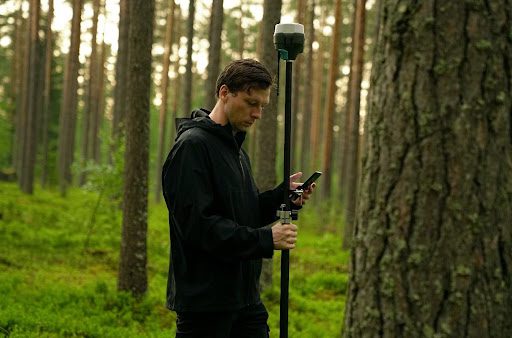Modern logging practices constantly evolve to become smarter, greener, and environmentally beneficial. Current and upcoming technologies have paved the way for forestry innovation in timber harvests.
This guide explains the promising future of timber harvests and logging practices. For logging and forest companies such as William A. Day Jr. & Sons, the health of forests and ecosystem is paramount.
From seedling to tree monitoring to maturity – everything is changing due to new technologies. Let’s explore how!
New Ways of Forest Management
Innovative techniques and technologies have emerged to manage forests across the world effectively. Some of the current and upcoming technologies include:
- Drones
- Scanners
- Tree-breeding advancements
- Lasers
- 3D imaging and sensing
- Infra-red Sensors
These technologies have shaped the way forests are managed sustainably. For instance, drones can be used to gather accurate data. This data can be used to improve land planning and forest management.
Use of DNA
Illegal and irresponsible logging practices in places like South America have damaged forests and biodiversity. However, technological advancements have introduced new ways to track illegal practices. DNA fingerprinting can track and verify whether wood products have been harvested legally.
Individual logs can be traced to their origin to combat illegal practices and associated trade. This practice particularly helps businesses committed to due diligence.
Wood Products
Upcoming and current technologies have also unlocked new ways to derive material from trees, including:
- Nano cellulose
- Engineered wood products
- Chemicals
- Pelletized wood
Good forest management practices can mitigate climate change. Forestry innovation can store millions of tons of carbon and reduce greenhouse gas emissions. The industry plans to achieve a carbon-neutral cycle by deriving biofuel from wood. These wood products can be used as a renewable resource in today’s carbon-constrained economy.
Light Detection and Ranging
Light Detection and Ranging (LiDAR) was previously used in meteorological research and air space. Today, it is used in forest research to examine the land accurately from diameter to height of trees and to estimate plot-level wood volume and ground terrain evaluation.
Drone and LiDAR are two of the prominent examples of modern logging practices that have revolutionized timber harvest. It’s also incorporated into everyday forest management across various forest management practices.
Foresters and loggers can use LiDAR via drones or airplanes to send light pulses down to the ground. The light pulse can then bounce back to mirror the captured data into images. This way, foresters, and planners can measure the slope, height, topography, and depth of the land that’s being surveyed.

Sustainable Forest Management – Role of Technology
Sustainable forest management, responsible sourcing, and modern logging are key to ensuring that trees meet their full potential. Tropical forests are under continuous threat of deforestation, but sustainable agriculture and timber harvest practices can improve their carbon capture and storage ability.
According to studies, managed forests absorb more carbon than natural or unmanaged forests. The timber and logging industry can assure this by encouraging responsible partnership, governance and trade.
Forest stewardship and legacy planning demand technological development at the state, national and global levels. It means benefiting from cutting-edge technologies such as drones and LiDAR. Drones allow forest planners to get a high-resolution aerial view of the land. Modern logging companies are using drones to achieve reforestation and wildlife management.
Quick Information
Current technologies are helping forest planners and managers to gather and access data more efficiently and quickly than ever before.UAS (Unmanned aerial systems) such as drones also support data collection.
UAS determines the inventory of healthy and diseased tree species in a forest and undertakes insect surveys. These technologies can also be used as an alternative to manual assessments that are often time-consuming.
Modern logging practices involve using UAS with other technologies to make forest management and timber harvest more cost-effective. These new systems speed up the assessment and evaluation process and make accessing information easier.
Engineered Wood Innovation
Engineered wood innovation allows wood owners to create stronger and more eco-friendly materials from smaller trees. Research shows that smaller wood can improve forest health when glued together to create big walls and beams.
Mass timber offers a unique opportunity to produce wood products of the highest value. This engineered wood uses eco-friendly adhesives and is a lighter and less expensive alternative to building materials such as concrete and steel.
Waste Management
Environment-lasers, optimizers, computer sensors, technology, and scanners can maximize the quality and yield of the wood fiber. This reduces the wood waste that was traditionally discarded. Today, every fiber and flake is used for something. Even sawdust, shavings, and chops from wood are used to manufacture cardboard, pellets, paper, and livestock bedding. Sawdust is also used to fuel boilers.

If you’re looking for a logging company that embraces new and greener technologies, you’re at the right place. William A. Day Jr. & Sons is a team of certified master loggers. We focus on being at the forefront of modern logging and forestry innovation. Reach out to us today to learn more about advancements in the timber harvest to get the best results.
